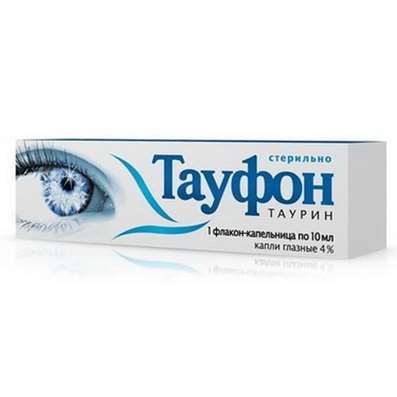Instruction for use: Aminocaproic acid
I want this, give me price
Trade name of the drug – Aminocaproic acid, Aminocaproic acid solution for injections 5%, Polycapran
The Latin name of the substance Aminocaproic acid
Acidum aminocaproicum (genus. Acidi aminocaproici)
Chemical name
6-Aminohexanoic acid
Gross formula
C6H13NO2
Pharmacological group:
Inhibitors of fibrinolysis
The nosological classification (ICD-10)
D68.8 Other specified disorders of coagulation: Afibrinogenemia; Coagulopathies are hereditary
D69.9 Hemorrhagic condition, unspecified: Diathesis, hemorrhagic (familial); Hemorrhagic diathesis; Hemorrhagic complications; Hemorrhagic conditions; Hemorrhagic diathesis; Hemorrhagic syndrome; Disease of internal organs with hemorrhagic syndrome
O08.1 Prolonged or massive bleeding caused by abortion, ectopic and molar pregnancy: Bleeding during pregnancy
O45.9 Premature placental abruption, unspecified: Premature placental abruption
Z100 * CLASS XXII Surgical practice: Abdominal surgery; adenomectomy; Amputation; Coronary angioplasty; Angioplasty of the carotid arteries; Antiseptic skin treatment for wounds; Antiseptic Hand; Appendectomy; atherectomy; Balloon coronary angioplasty; Vaginal hysterectomy; The coronary bypass; Interventions in the vagina and cervix; Interventions on the bladder; Intervention in the mouth; Restoration and reconstructive surgery; Hand hygiene of medical personnel; Gynecologic surgery; Gynecological intervention; Gynecological surgery; Hypovolemic shock during operations; Disinfection of purulent wounds; Disinfection of wounds edges; Diagnostic intervention; Diagnostic procedures; Cervical Diathermocoagulation; Long-surgery; Replacing the fistula catheters; Infection in orthopedic surgery; Artificial heart valve; cystectomy; Short-term outpatient surgery; Short-term operation; Short surgical procedures; Krikotireotomiya; Blood loss during surgery; Bleeding during surgery and in the postoperative period; Kuldotsentez; laser photocoagulation; laser coagulation; retinal laser coagulation; Laparoscopy; Laparoscopy in Gynecology; CSF fistula; Small gynecological operations; Small surgical procedures; Mastectomy and subsequent plastic; mediastinotomy; Microsurgical operations on the ear; Mukogingivalnye operation; suturing; Minor surgery; neurosurgical operation; Immobilization of the eyeball in ophthalmic surgery; testectomy; pancreatectomy; Perikardektomiya; The period of rehabilitation after surgery; The period of convalescence after surgery; Percutaneous transluminal coronary angioplasty; Pleural thoracentesis; Pneumonia postoperative and posttraumatic; Preparation for surgical procedures; Preparation for surgery; Preparation of the surgeon's hands before surgery; Preparation of the colon for surgical procedures; Postoperative aspiration pneumonia in neurosurgical and thoracic surgery; Postoperative nausea; Postoperative bleeding; postoperative granuloma; postoperative shock; The early postoperative period; myocardial revascularization; Radiectomy; gastric Resection; bowel resection; uterine Resection; liver Resection; enterectomy; Resection of part of the stomach; Reocclusion of the operated vessel; Bonding tissues during surgical procedures; Removal of sutures; Condition after eye surgery; Condition after surgery; Condition after surgery in the nasal cavity; Condition after gastrectomy; Status after resection of the small intestine; Condition after tonsillectomy; Condition after removal of the duodenum; Condition after phlebectomy; Vascular surgery; Splenectomy; Sterilization of surgical instruments; Sterilization of surgical instruments; sternotomy; Dental surgery; Dental intervention in periodontal tissues; strumectomy; Tonsillectomy; Thoracic surgery; Thoracic surgery; total gastrectomy; Transdermal intravascular coronary angioplasty; Transurethral resection; Turbinektomiya; Removal of a tooth; cataract surgery; Removal of cysts; tonsillectomy; Removal of fibroids; Removing the mobile primary teeth; Removing polyps; Removing broken tooth; Removal of the uterus body; Removal of sutures; Fistula likvoroprovodyaschih ways; Frontoetmoidogaymorotomiya; Surgical infection; Surgical treatment of chronic limb ulcers; Surgery; The surgery in the anal area; The surgery on the colon; Surgical practice; The surgical procedure; Surgical interventions; Surgery on the gastrointestinal tract; Surgical procedures on the urinary tract; Surgical procedures on the urinary system; Surgical intervention of the genitourinary system; Surgical procedures on the heart; Surgical manipulation; surgery; Surgery on the veins; Surgical intervention; Vascular surgery; Surgical treatment of thrombosis; Surgery; cholecystectomy; Partial gastric resection; hysterectomy; Percutaneous transluminal coronary angioplasty; Percutaneous transluminal angioplasty; Coronary artery bypass; tooth Extirpation; Extirpation of milk teeth; pulpectomy; pulsative cardiopulmonary bypass; tooth Extraction; teeth Extraction; cataract extraction; Electrocoagulation; endourological intervention; episiotomy; Etmoidotomiya; Complications after tooth extraction
CAS code
60-32-2
Characteristics of the substance Aminocaproic acid
Inhibitor of fibrinolysis.
Colorless crystals or white crystalline powder, odorless and tasteless. It is easily soluble in water, very little in methanol, practically insoluble in ethanol and chloroform. Molecular weight 131.7.
Pharmacology
Mode action - Hemostatic.
Inhibits the activators of the profibrinolysin and inhibits its conversion into fibrinolysin. To a lesser extent has a direct inhibitory effect on fibrinolysin. It inhibits the activating effect of streptokinase, urokinase and tissue kinases on fibrinolysis. Neutralizes the effects of kallikrein, trypsin and hyaluronidase, reduces the permeability of capillaries. Stimulates the formation of platelets, sensitizes platelet receptors to thrombin, thromboxane A2 and other endogenous aggregates. Has a systemic haemostatic effect in bleeding caused by increased fibrinolytic activity of the plasma. Has antiallergic activity, improves the antitoxic function of the liver.
Well absorbed when taken orally, Cmax in the blood plasma is determined after 1-2 hours. It is excreted by the kidneys, mostly unchanged, about 40-60% is excreted within 4 hours. If the excretory function of the kidneys is disturbed, excretion slows down and the concentration of aminocaproic acid sharply increases in blood. When i / in the introduction is eliminated faster: T1 / 2 - 77 minutes, for 12 hours more than 89% is output.
Application of the substance Aminocaproic acid
Bleeding (hyperfibrinolysis, hypo- and afibrinogenemia). Bleeding during surgical interventions on organs rich in fibrinolysis activators (lungs, thyroid, stomach, cervix, prostate gland). Diseases of internal organs with hemorrhagic syndrome; Premature abruption of the placenta, complicated abortion. To prevent secondary hypofibrinogenemia in massive transfusions of canned blood.
Contraindications
Hypersensitivity, hypercoagulable states with a tendency to thrombosis and embolism, chronic renal failure, cerebral circulation disorder, DIC-syndrome, pregnancy.
Restrictions
Arterial hypotension, valvular heart disease, hematuria, bleeding from the upper urinary tract unidentified etiology, liver failure, impaired renal function.
Pregnancy and breast-feeding
The action category for fetus by FDA is C.
Side effects of Aminocaproic acid
Rhabdomyolysis, myoglobinuria, acute renal failure, subendocardial hemorrhage, nausea, diarrhea, convulsions, decreased blood pressure, orthostatic hypotension, headache, dizziness, tinnitus, nasal congestion, skin rashes.
Interaction
The effect is reduced by anticoagulants (direct, indirect), antiaggregants.
Routes of administration
IV (by drop infusion), Inside, locally.
Special instructions
When prescribing aminocaproic acid, it is necessary to control the fibrinolytic activity of the blood and the content of fibrinogen.
There are reports of inappropriate use in women for the purpose of preventing increased blood loss during childbirth due to the possibility of thromboembolic complications in the postpartum period.

 Cart
Cart





